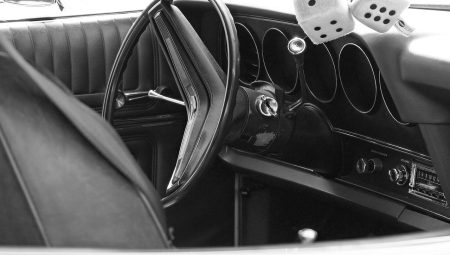Discover the significance of engine mount torque, learn how to measure it correctly, and explore tips for maintaining optimal torque for vehicle performance.When it comes to the smooth operation of any vehicle, engine mount torque plays a crucial role that often goes unnoticed. Engine mounts serve as vital components that secure the engine to the chassis, minimizing vibrations and ensuring stability. However, the correct torque applied to these mounts is essential for optimal performance and safety. In this blog post, we will explore what engine mount torque is and why it matters. We’ll discuss the potential consequences of incorrect torque settings and provide guidance on how to measure torque accurately. Additionally, we’ll share valuable tips for maintaining the ideal engine mount torque throughout your vehicle’s life. Whether you’re a seasoned mechanic or a car enthusiast, understanding engine mount torque can help keep your vehicle running smoothly and efficiently.
What is Engine Mount Torque?
Engine mount torque refers to the specific tightness that is applied to the bolts or fasteners used to secure the engine mounts in place, which are crucial components that help to isolate the engine from the vehicle’s chassis while ensuring a stable connection between them.
This concept is essential not only for the integrity of the engine’s placement within the vehicle but also for maintaining proper vehicle performance, as inadequate torque can lead to vibrations, noise, and even damage to the engine or other connected systems.
Moreover, understanding the correct specifications for engine mount torque involves consulting the vehicle’s service manual, where manufacturers provide detailed instructions regarding the appropriate torque values for each engine mount, highlighting the necessity for preci
Importance of Engine Mount Torque
The importance of engine mount torque cannot be overstated, as it plays a crucial role in ensuring that the engine is securely attached to the vehicle’s chassis, which not only minimizes vibration and noise but also enhances overall vehicle stability and performance; a properly torqued engine mount allows for optimal power transfer and helps maintain the correct alignment of various engine components, making it essential for the long-term viability of your vehicle.
Furthermore, when engine mount torque is within the specified range, it helps in maintaining the integrity of the engine mounts themselves, preventing premature wear and tear and subsequently reducing the likelihood of costly repairs arising from damaged mounts or misaligned engines; hence, following the manufacturer’s recommendations regarding torque specifications is key, as this ensures that the engine operates effectively and efficiently throughout its lifespan.
To illustrate this point further, consider the potential implications of ignoring the correct engine mount torque: not only can it lead to excessive engine movement, which could result in stress on various components like hoses and wiring, but it could also cause significant issues such as engine misalignment or failure, ultimately compromising vehicle safety; therefore, it is vital to regularly audit the engine mount torque and address any discrepancies to uphold performance and safety standards.
Effects of Incorrect Torque
When it comes to the performance and longevity of a vehicle’s engine, one of the crucial factors that significantly impacts these aspects is the correct torque applied to the engine mounts, and it is imperative to understand that incorrect torque can lead to a multitude of problems that not only jeopardize the structural integrity of the engine but can also create vibrational disturbances, adversely affecting the vehicle’s overall driving experience.
One of the most immediate effects of applying incorrect torque to engine mounts is the increased likelihood of vibration, which can lead to several negative consequences, including excessive wear on the engine components and failure of the mounts themselves; this, in turn, can lead to the engine becoming misaligned, which may result in further mechanical issues that can be both costly and time-consuming to rectify.
Moreover, when engine mount torque is improperly set, it can dramatically influence the dynamics of the drivetrain, leading to greater stress on gears and other vital components, ultimately causing them to malfunction, which underscores the significance of ensuring that proper torque specifications are always adhered to in order to maintain the safety, efficiency, and overall performance of the vehicle.
How to Measure Torque Correctly
Measuring torque correctly is an essential aspect of maintaining an engine’s performance and longevity, as the torque applied to engine mounts directly impacts their effectiveness and reliability, which in turn affects the overall operation of your vehicle. Torque is a measure of the rotational force applied to tighten or loosen a bolt, and when it comes to engine mounts, achieving the proper torque specification is crucial to preventing excessive vibration or damage to the engine and surrounding components.
To begin measuring torque correctly, you’ll need a few essential tools which include a high-quality torque wrench that provides an accurate reading in either foot-pounds or Newton-meters, and the specific torque specifications for your vehicle’s engine mounts, which are often found within the repair manual or service guides. Calibration of your torque wrench is also paramount, as an improperly calibrated wrench could lead to significant deviations from the required torque values, so always ensure that your tools are properly set up before beginning any work.
Once you have your tools ready, it’s important to follow a systematic approach, which typically involves tightening the bolts in a crisscross pattern to ensure even pressure is applied across the mounting surface, and listening for the audible click of the torque wrench to indicate that the proper torque has been achieved. Additionally, you can maintain records of the torque measurements you take, so keeping a logbook or using digital tools to help track the torque settings over time can prove beneficial for future adjustments or checks.
Tips for Maintaining Engine Mount Torque
When it comes to ensuring the longevity and performance of your vehicle’s engine, maintaining the correct engine mount torque is absolutely crucial; however, many car owners might overlook this essential aspect due to a lack of knowledge or understanding of the importance of proper torque settings, which can ultimately lead to various mechanical issues down the line.
To prevent such complications, it’s advisable to regularly check the engine mount torque specifications provided in your vehicle’s owner’s manual, because adhering to these guidelines will not only guarantee that your engine remains securely mounted within the chassis but also minimizes vibrations that could potentially lead to premature wear and tear on both the engine and its supporting components.
Moreover, using a reliable torque wrench when installing or adjusting the engine mounts is imperative, as this tool allows you to apply the precise amount of force needed to achieve optimal torque settings; additionally, always be sure to inspect the engine mounts for signs of wear, such as cracks or excessive rubber deterioration, and replace them as necessary to maintain the integrity and performance of your vehicle.
Frequently Asked Questions
What is an engine mount and its purpose?
An engine mount is a component that secures the engine to the vehicle’s frame while dampening vibrations and allowing for slight movement.
Why is proper torque specification important for engine mounts?
Proper torque specification is crucial because it ensures that the engine mount is secured correctly, preventing excessive movement or vibrations that could lead to engine damage or failure.
How can I find the correct torque specifications for my vehicle’s engine mounts?
You can find the correct torque specifications in your vehicle’s service manual or by consulting the manufacturer’s guidelines.
What tools do I need to torque engine mounts properly?
To torque engine mounts properly, you’ll typically need a torque wrench, appropriate sockets, and possibly a breaker bar for additional leverage.
What can happen if engine mounts are not torqued to specification?
If engine mounts are not torqued to specification, it can lead to increased vibrations, misalignment of the engine, and potential damage to engine components over time.
How often should engine mounts be checked or replaced?
Engine mounts should be checked during routine maintenance and replaced if you notice signs of wear or damage, usually every 60,000 to 100,000 miles.
Can I torque engine mounts myself, or should I hire a professional?
If you have basic mechanical skills and the right tools, you can torque engine mounts yourself; however, if you’re unsure, it’s best to consult a professional mechanic.





